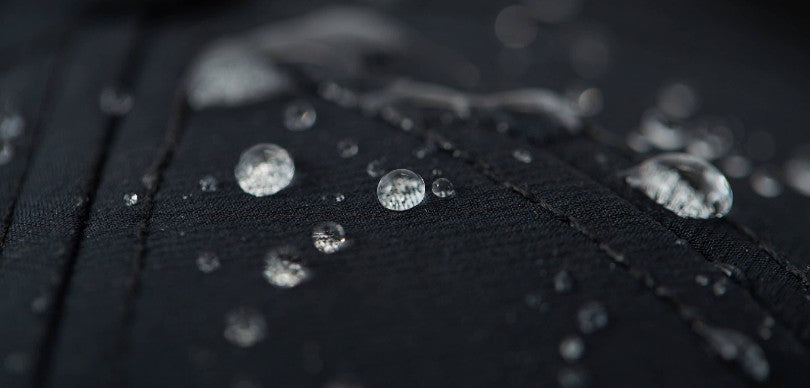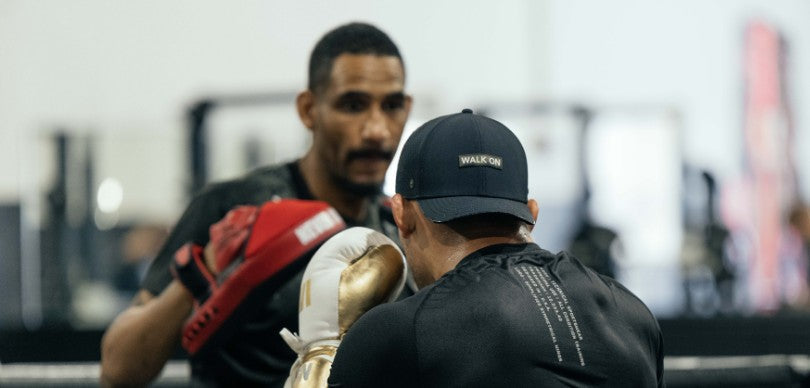As the weather warms up, we’re tuning up our golf swings for some fun in the sun. So we asked one of our melin Ambassadors on Tour for some swing tips.
Our guy Danny Guise is a card-carrying member of the 2023 Korn Ferry Tour and he just made his PGA Tour debut at the Sony Open in Hawaii in January.
(Follow Danny on Instagram and/or Twitter)
Shortly after playing in the Valspar Open in March, he sent us some full-on cheat codes to master our games.

Here’s Danny:
When it comes to the full swing, everyone has their unique way of swinging the club that fits them best. Owning your swing is a phrase that comes up a lot in golf, and it’s absolutely true.
If you look at all of us on tour, whether it's Korn Ferry or PGA, everyone has a different swing. No two are alike. We all try to perfect what we have to the best of our abilities. With that being said, there are some basic things that must be checked off before you even make a golf swing.
First, your grip. This can be crucial to your swing because it’s the only body part that’s connecting you to the golf club. If your grip is off, then the golf swing can break down without you knowing. Some players have strong grips, and some have weaker grips depending on how they were taught or what feels comfortable to them. Ideally, a good grip for a beginner level to test out is to have both “V’s” (formed by your thumb and index finger) pointing up your right shoulder line for a righty and left shoulder line for a lefty. This will give you a neutral grip.
Second, your posture/stance. This can cause bad habits in your golf swing if you aren't cautious of how you set up to the ball. It’s important that you bend over at the waist with a little bit of knee flex. Your arms should feel like they are hanging straight down from there and not reaching too far or coming too close to your legs. Being in an athletic position in your stance will allow for a more fluid motion in your golf swing. Poor posture makes it harder to form a consistent swing.
Third, your ball position. This has a huge effect on the direction of the ball or the type of shot shape. Being just an inch off with your ball position can result in errant shots, even if you put a great swing on it. With your wedges, generally you want the ball to be slightly behind the middle of your stance but no farther than the middle of your stance. Your short irons (9-7) should be in the middle of your stance or slightly forward of middle. Long irons (6-3) and woods should be about 3/4 up in your stance since there is less loft. Then your driver can be closer to your front foot to allow you to hit up on the ball to create maximum distance.
Fourth, your alignment. Making sure you are aligned correctly might seem obvious but if you are off by a little bit it’s very easy to form bad habits (similar to poor posture/set up). Aiming offline can force your body to compensate for it and either come over the top to pull it back online or drop it inside to push it back online. This can be very unreliable, especially under pressure. An easy way to work on and train your alignment is to put a club down between you and the golf ball facing square down your target line so you can train your eyes to see what it feels like to aim correctly.
Even though this checklist is very basic, I and other professionals always make sure we monitor these things first before diving into our swing itself because a lot of the time the underlying problem can come from one of these simple fundamentals being done incorrectly.

INTERMEDIATE LEVEL - Chipping Fundamentals:
Unlike the full swing where everyone has their own unique way of swinging the club, it’s important to know that there’s really only one way to be a consistent chipper and pitcher of the ball at a high level. I notice a ton of amateur golfers trying to scoop/help the ball into the air, which forces them to rely on perfect timing in order for that to work. Most of the time, they only hit 1 out of 10 shots well. Contact is super important when it comes to controlling your distance on chips and pitches. These three fundamental tips will help improve your contact as well as add more consistency to your short game.
Chipping Fundamental 1 - Make sure your weight is forward (righty - left side / lefty - right side) on any basic chip or pitch. To know if your weight is fully on your front foot, you should be able to pick up your back foot off the ground without a problem or losing balance. Most people who try and scoop the ball into the air will have their weight back and try and pick the ball into the air, which more than likely will result in either a chunk behind the ball or a blade across the green. Keeping your weight forward allows you to make good, clean contact with the ball. Without clean contact, you can’t expect to get chips or pitches close.
Chipping Fundamental 2 - Choosing whether or not you want to go high or low with the ball flight before you chip is key. In order to do this, you have to determine where you place your ball position. If you want to go low with it, you place the ball off your back foot. This will allow the ball to release and roll out when you have more green to work with. If you want to go high with it, you place the ball off your front foot. This will stop the ball a little quicker than normal if you have less green to work with.
Chipping Fundamental 3 - Once you have your weight forward and you determine the height of the chip you want by placing the ball off your back foot or front foot, you have to make sure you accelerate your hands through impact and not let the club head pass your hands. By letting the clubbed pass your hands, it will result in an “L” shape between your lead arm and club shaft. This is the scooping motion I was referring to earlier and what you want to avoid. Ideally you want your lead arm and club shaft in a straight line or even a reverse “L” after impact.
ADVANCED LEVEL - Putting Drills:
Putting is another area of the game where there’s a variety of methods or styles you can use to get the ball into the hole as efficiently as possible. There’s no one correct way to putt, but there’s definitely an optimal way to practice your putting.
I’m a big believer in practicing with a purpose, which is practicing in ways that simulate what it would be like on the course or in pressure situations in a tournament. By applying pressure to my putting in practice, I can develop confidence to handle certain situations on the course. Just dropping a ball on the green and smacking putts around doesn’t do you any good. I’d like to share a few good drills that I use to work on my stroke as well as simulate some pressure situations for myself so I’m ready to go when I'm in a tournament.
Putting Drill 1 - Start Line Gate Drill
I always start my putting practice with this drill just to make sure I get the ball rolling on the line that I want. I usually start off with a straight putt, and you can do this to a hole or to a tee or even to nothing. All you need for this are 2 tees and a few golf balls. You’ll want to set the two tees up about 6-8 inches in front of the ball in the direction you're rolling it. The width of the tees should be slightly wider than a golf ball leaving you with very little wiggle room left or right to putt the ball through (you can widen it a little if it’s too hard at the beginning). Hitting the tees gives you that instant feedback if you push or pull the putt. Depending on how you feel or if it’s your first time starting this drill, you can do 5 or 10 in a row without hitting the tees before moving on to another drill. I always start with 30 in a row through the tees to get my stroke going before moving on to some of the pressure-oriented drills.
Putting Drill 2 - 3ft Circle Drill
This drill obviously helps you with your 3 foot putts, which is your foundation to the short game. Being able to master your 3 footers will help give you confidence in your long putts and your chipping knowing you have those 3 footers locked up. For this drill, you want to set up 10 tees around the hole 3 feet out. The goal here for me is to make 100 in a row going around the circle (you can start at 10 and then move up to 20, 30, etc.). The reason I love this drill is because of how it simulates that added pressure you would feel in a tournament or for your club championship. Phil Mickelson did this drill all the time because he knew if he could feel comfortable within the drill, especially when he got closer and closer to that 100th putt, he could feel close to that same way in a high pressure position in a big tournament. That’s a perfect example of practicing with a purpose.
Putting Drill 3 - 10/20/30/40/50 Ladder Drill
This is a good drill to help with your longer putts or your “lag” putts. For this drill, it’s important to find a hole that gives you space to go as far as 50 feet back from the hole. You’ll need 5 tees to set up at 10, 20, 30, 40, and 50 feet, an alignment rod or a club to lay 3 feet directly behind the hole, and 4 golf balls. The goal of this drill is to either make the putt or have it end up in between the hole and the alignment rod/club behind the hole with all 4 balls in a row to be able to move back to the next length putt. This drill can be done on a flat putt or uphill/downhill putts to change things up a bit for feel.


























